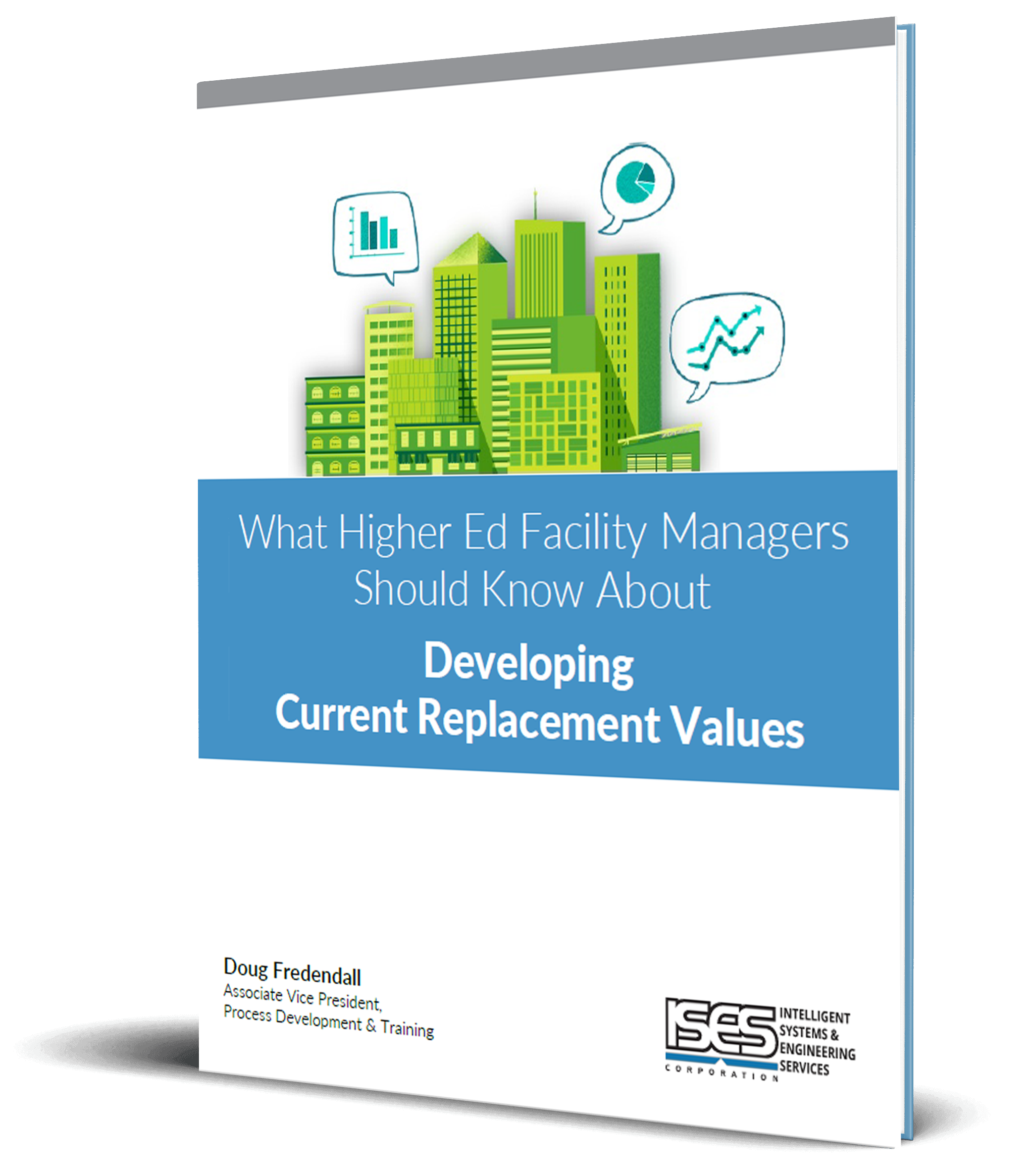This is the fourth in an occasional series on this topic.
Previous posts have discussed deferred maintenance and illustrated the need to address total renewal needs, not just deferred needs. Options for measuring portfolio condition have been explored. We’ve looked at the establishment of funding targets based on desired conditions. Implicit in all these actions is the need to first determine what the existing renewal needs are and their costs. This installment addresses the two primary, often competing, means of conducting a facility condition assessment (FCA).
Facility renewal needs can be ascertained either through modeling or comprehensive assessment. Since both can be performed by in-house personnel or outsourced to service providers, the focus here is not who does the data development, but rather the factors that differentiate the two methods.
Modeling Approach
Development of renewal needs via modeling involves applying benchmark standards to a facility portfolio and extrapolating the needs based on those standards. Some modeling approaches can be very sophisticated and consider the age of the facility, its primary use and many other factors. Other systems are lower level, simply taking into account the type of facility.
Modeling systems are useful for generating a total renewal need that is within the bounds of credibility, if the priority is to minimize the cost to get at a number. This approach is often utilized by cash-strapped organizations to generate the number quickly and cheaply. The word “cheaply”, however, brings with it some unavoidable consequences. A cheaply-generated renewal need total can easily be off by more than 20 percent. This is a significant amount when we’re talking about backlogs with eight or more numerals before the decimal point. The cheaply-generated number also has zero long-term usefulness beyond its initial application to request for long-range funding.
What do I mean by zero long-term usefulness? By design, a modeled backlog number doesn’t inform the facility manager which roofs or chillers have the greatest need. It can’t tell you where to focus your scarce renewal funding to obtain the maximum benefit. The model may tell you that the average building will need $X,XXX,XXX in HVAC renovations after a given number of years, but it doesn’t translate into actionable data for your maintenance crew. All systems have varying life spans, given the randomness of manufacturing, installation and maintenance quality. If your goal is to generate a number and be done with it, a model will fulfill your needs. It will not, however, be a tool that helps you properly manage your facility portfolio.
Another consideration associated with models is the inability to handle renewal needs caused by building code and use changes. Such issues account for a significant percentage of total renewal needs across the facilities management industry. Ignoring this subset of needs borders on negligence. It also raises potential liability issues for the owner, as noncompliance with accessibility issues or failure to upgrade life safety elements within a building can lead to expensive litigation.
An additional point with respect to modeling involves higher education campus utility systems. Campus infrastructure needs typically account for up to 30 percent of a total campus renewal cost. Failure to account for these costs can be catastrophic due to two factors:
-
The widespread impact of unplanned shutdown of utilities on a campus;
-
The massive cost associated with correcting utility system failures incurred in a short time span.
If utility infrastructure renewal needs are not planned for and addressed well in advance, their failure will completely overwhelm the ability of the owner to address them.
We’ve seen the pitfalls associated with modeling for identifying renewal needs and their costs. What, then, is the alternative? It’s the traditional, comprehensive condition assessment.
Comprehensive Approach
Development of renewal needs via a comprehensive approach involves a more in-depth study. In this case, existing deficiencies and upcoming needs are evaluated by trained, experienced assessors who can adjust useful life to reflect actual conditions of the systems inspected. This provides for more accurate data, resulting in the ability to provide truthful budget costs.
This approach can cost three to eight times as much as a model. The increased upfront cost calls to mind the tagline from an advertising campaign in the 1970s: You can pay me now or pay me later! This sentiment is irrefutably applicable in this discussion.
A report is developed for each facility with estimated costs to correct deficiencies and anticipated lifecycle failures within a specified period of time, such as 10 years. The costs include variable project delivery expenses as determined by the owner (e.g., construction markups). Renewal needs can be calculated by building, group of buildings, category of deficiency and numerous other ways.
Ideally, the renewal needs identified in a comprehensive approach are divided into two main categories – recurring and nonrecurring. Recurring needs are associated with replacement or renewal of building systems and components on a regular cycle. (Examples might be roofs, chillers, windows, finishes and air handling units.) Future needs are forecast by creating an inventory of renewable components within a facility. The inventory should include associated renewal costs, installation dates, life expectancy for each component, and be categorized by ASTM UNIFORMAT II classification codes. Then, a detailed, year-by-year projection of recurring renewal needs can be developed for each building.
The other type of renewal needs are nonrecurring needs. These one-time facility repairs and improvements typically consist of modifications to accommodate accessibility, address fire/life safety issues or alter a building for a new use. They also include deficiencies that could negatively affect the structure or systems and components within. (Examples of such needs are repair of building facade damage or a roof section or installing an ADA entrance ramp.) For these needs, recommendations are developed with estimated costs to rectify said deficiencies. Each nonrecurring need is categorized by system, priority and classification. The costs are indexed to local conditions, with markups applied as the situation dictates.
Conclusion
If you aspire to be a proactive facility manager, always working in the upper echelons of efficiency, it is imperative to conduct a comprehensive assessment of your portfolio. This exercise will provide you with a prioritized list of renewal needs, both short- and long-term. It doesn’t guarantee that you’ll never deal with surprises, but it does reduce the occurrence of them by orders of magnitude.
By conducting a thorough FCA on your portfolio, you’ll be able to recognize the condition of each facility, analyzed both separately and in comparison to your other assets. This allows you to appreciate the condition to which your facilities should be maintained, either at a glance or in depth. Having more precise data lets you evaluate the required level of funding necessary to maintain and upgrade the assets in accordance with the standards applied.
In conclusion, you can develop an estimate of your facility renewal needs based on modeling or extensive detailed data. Which makes the most sense to you?


